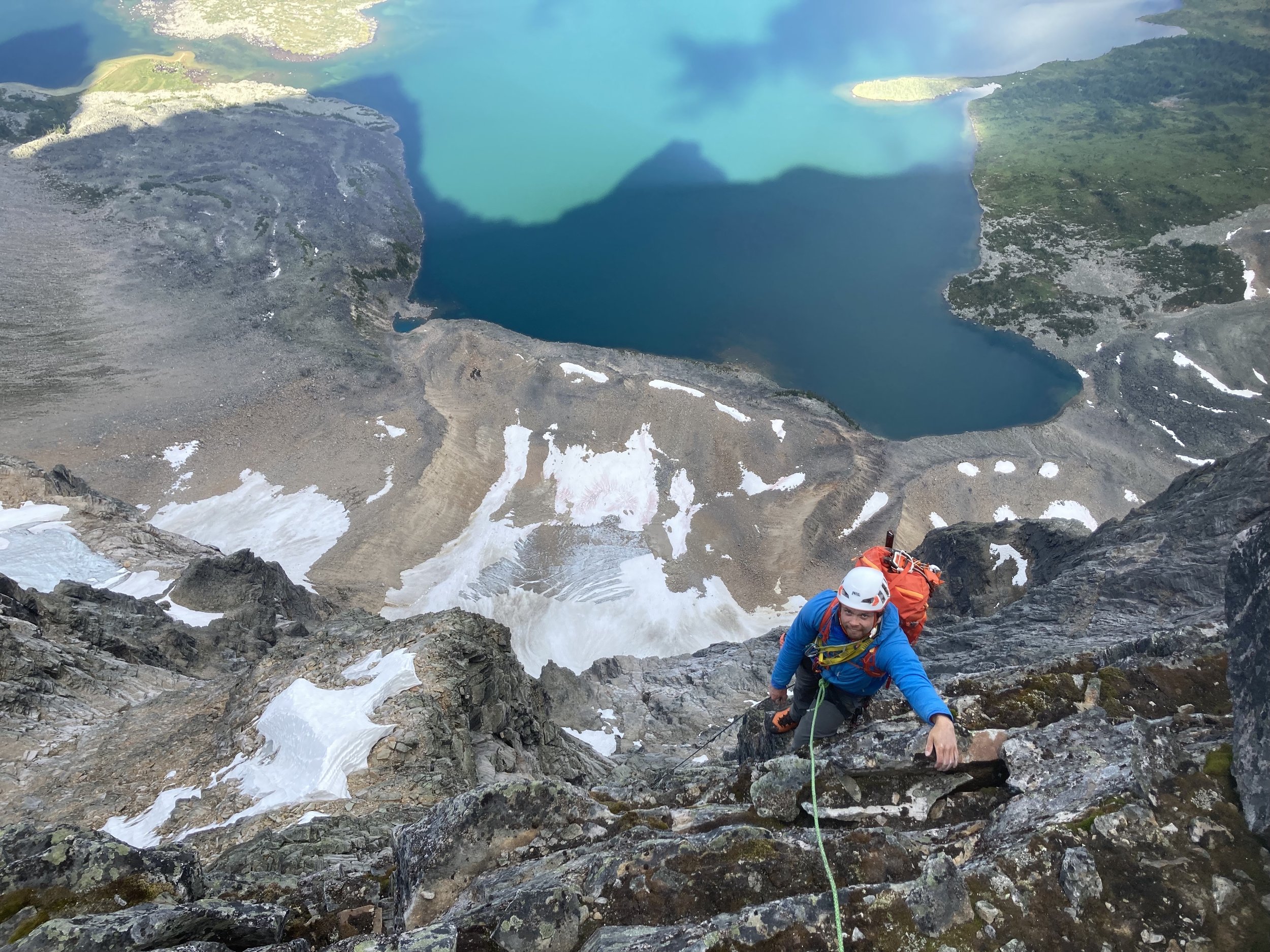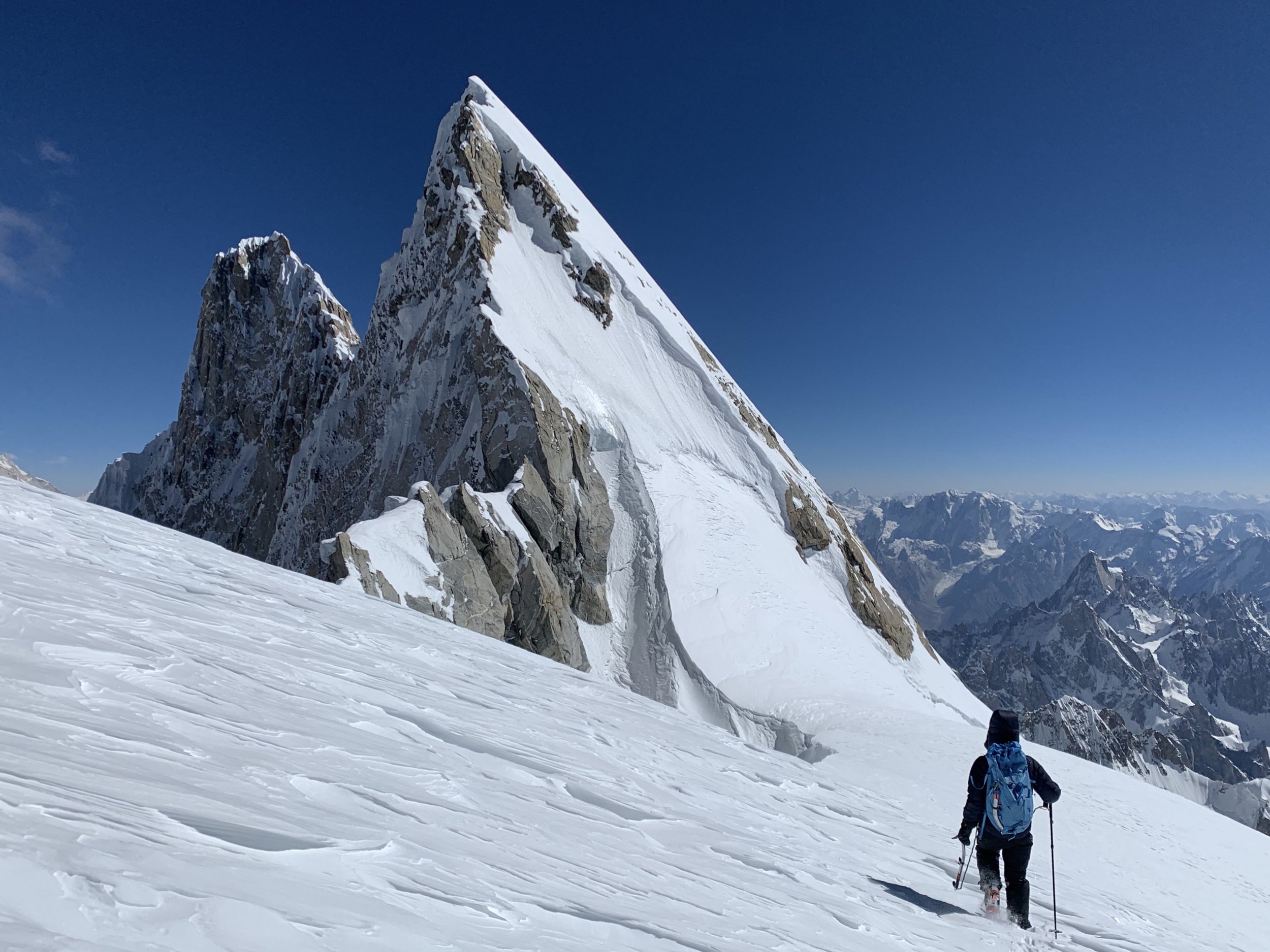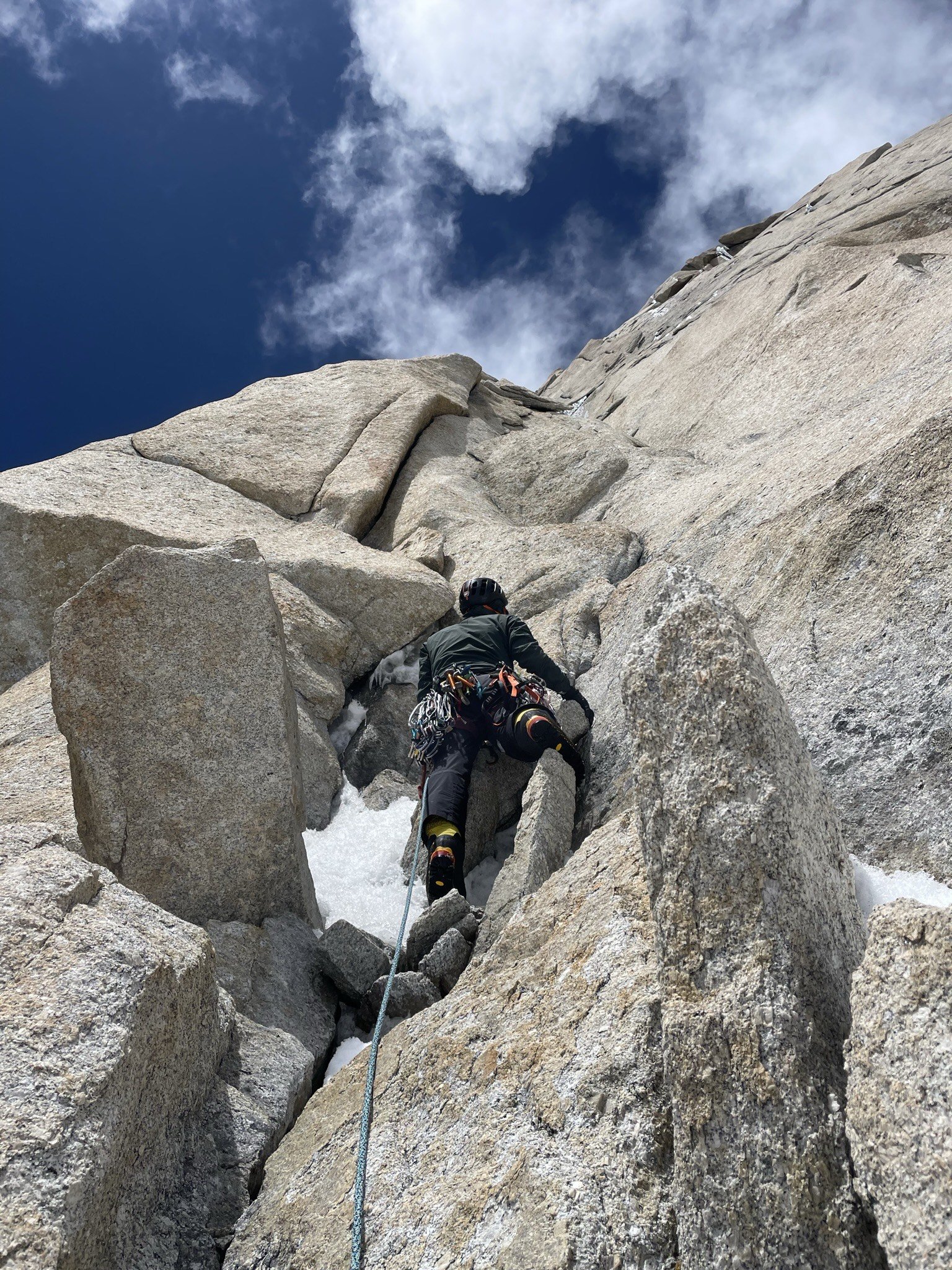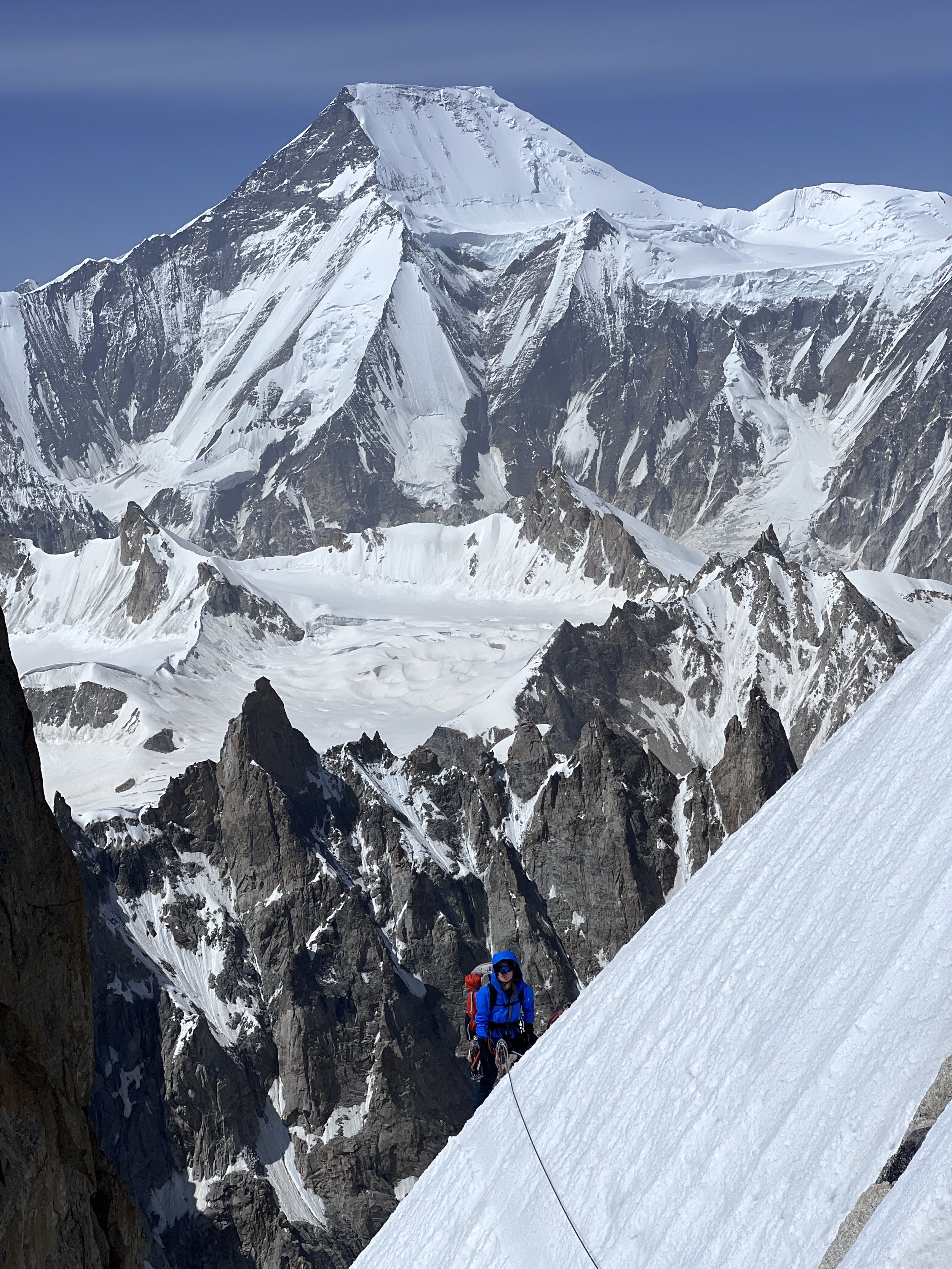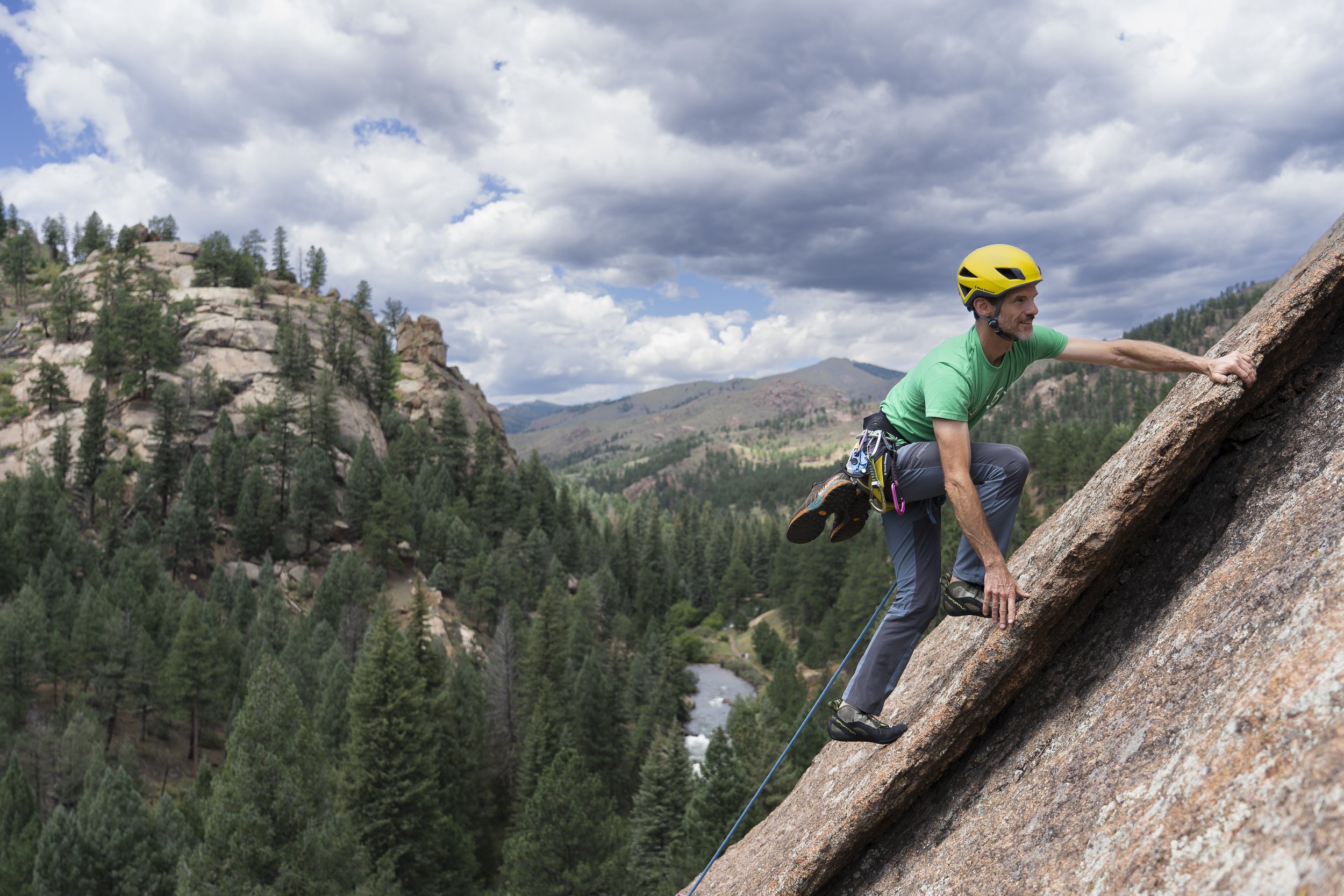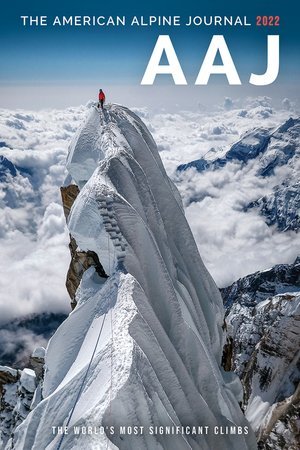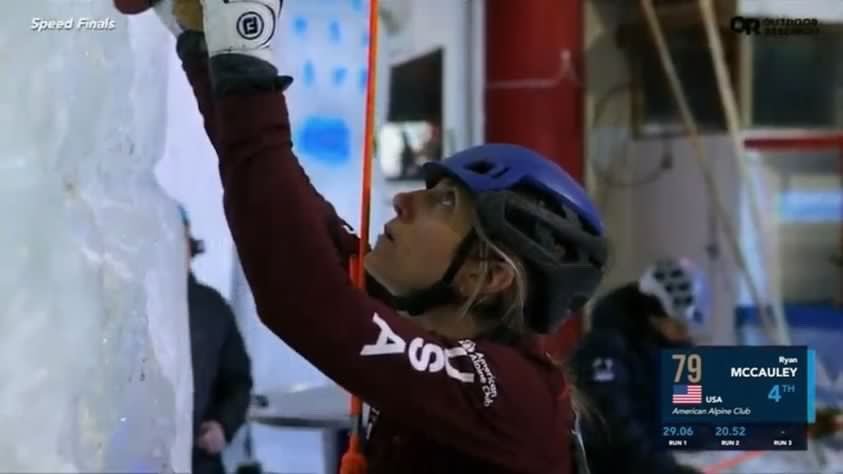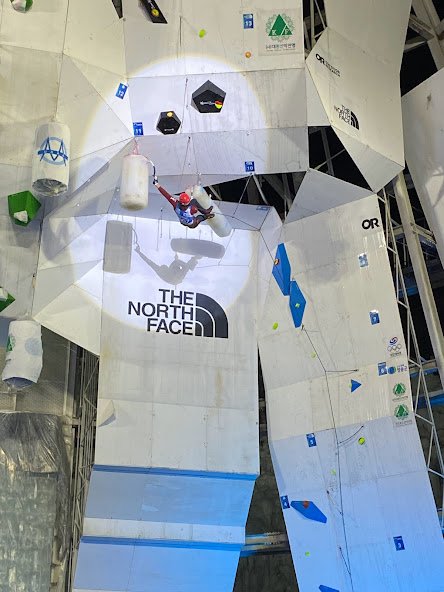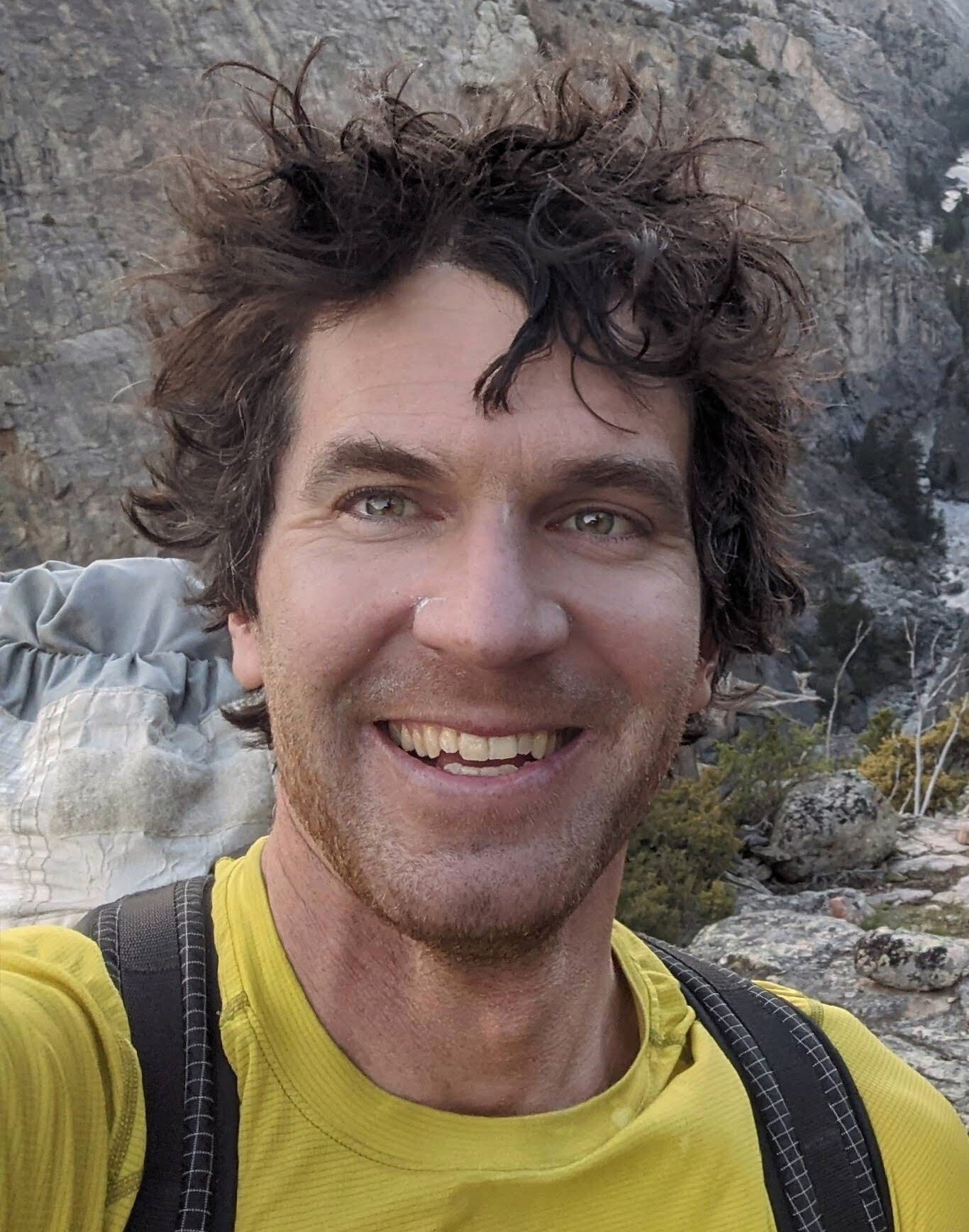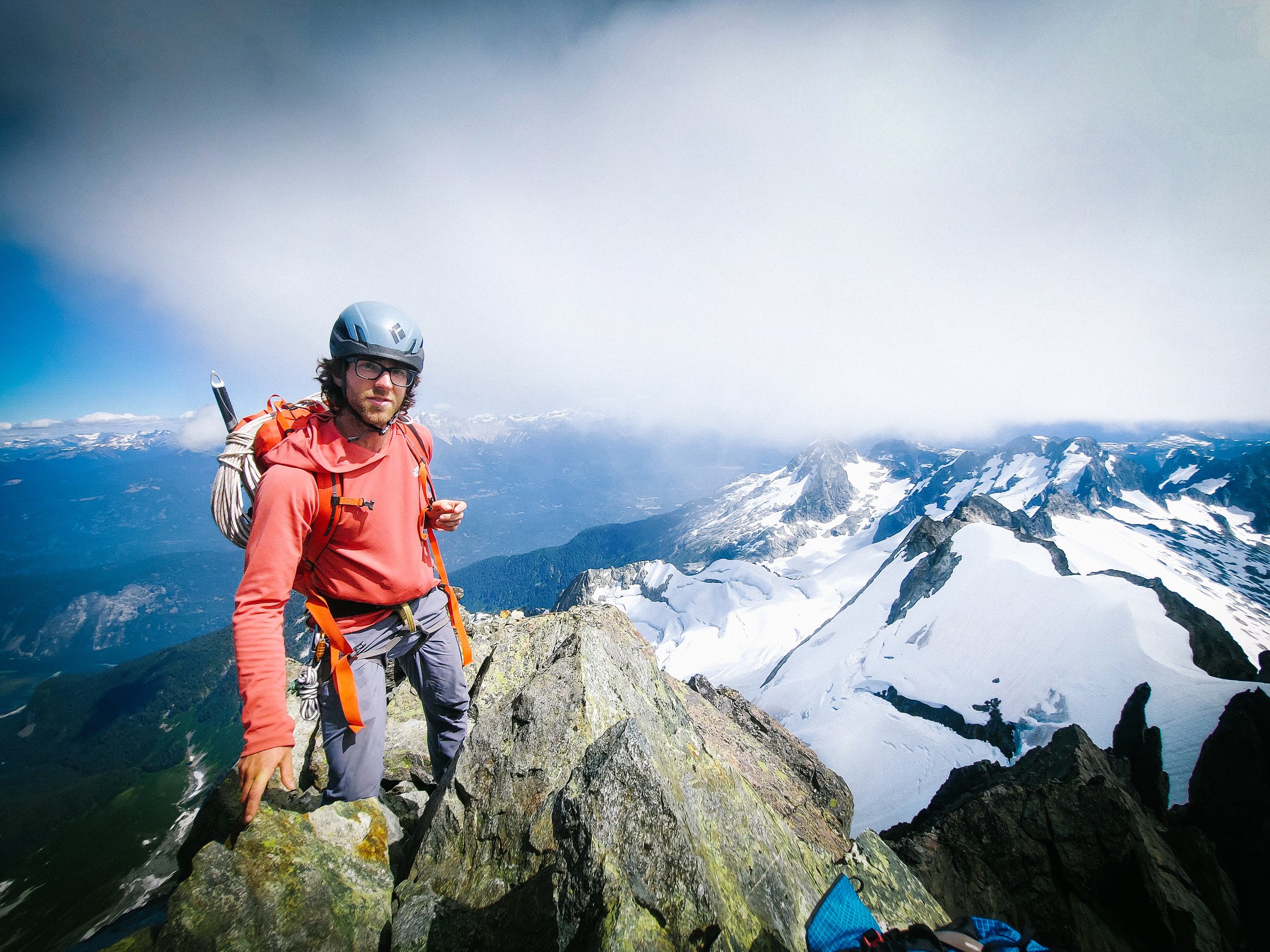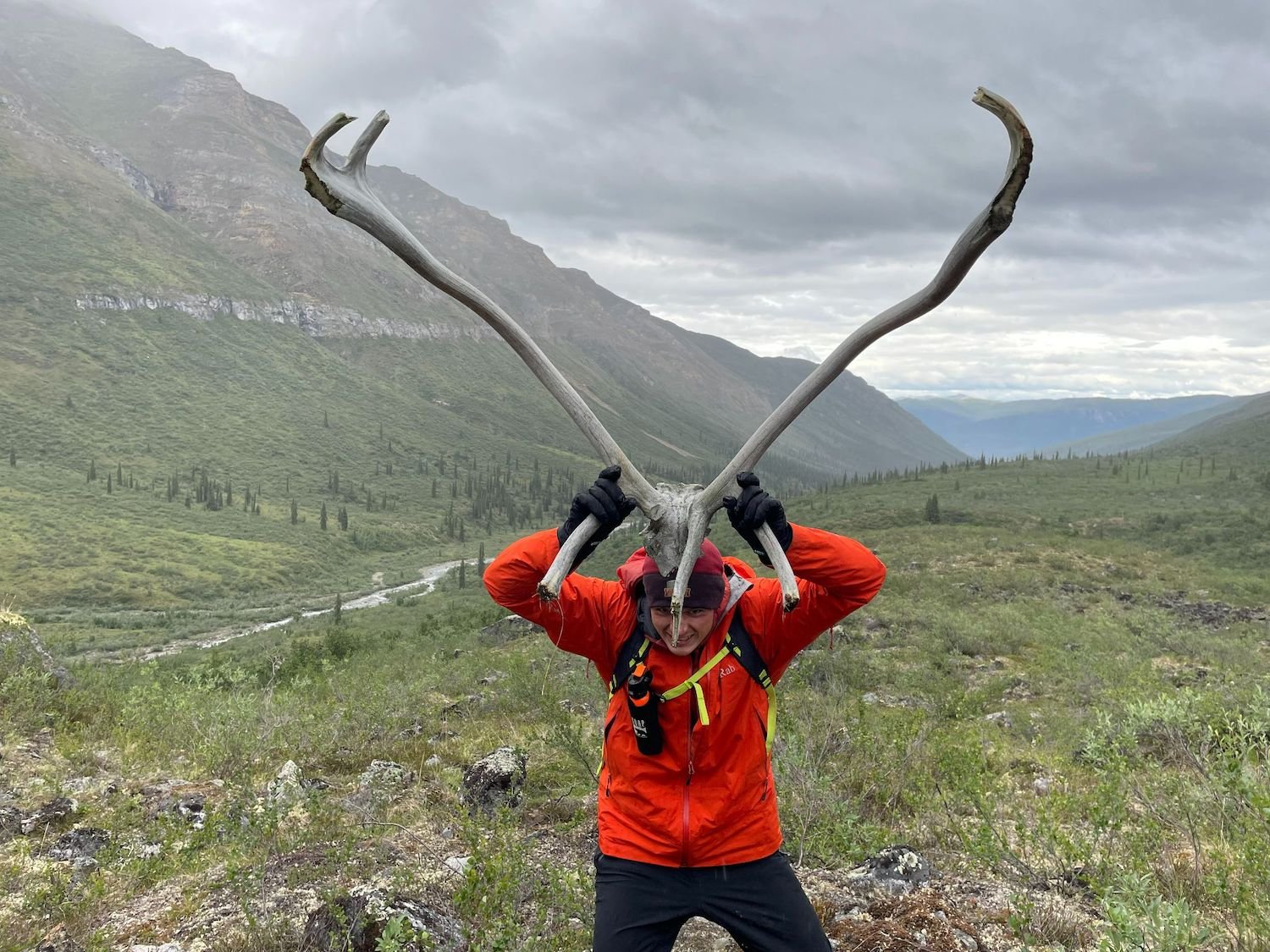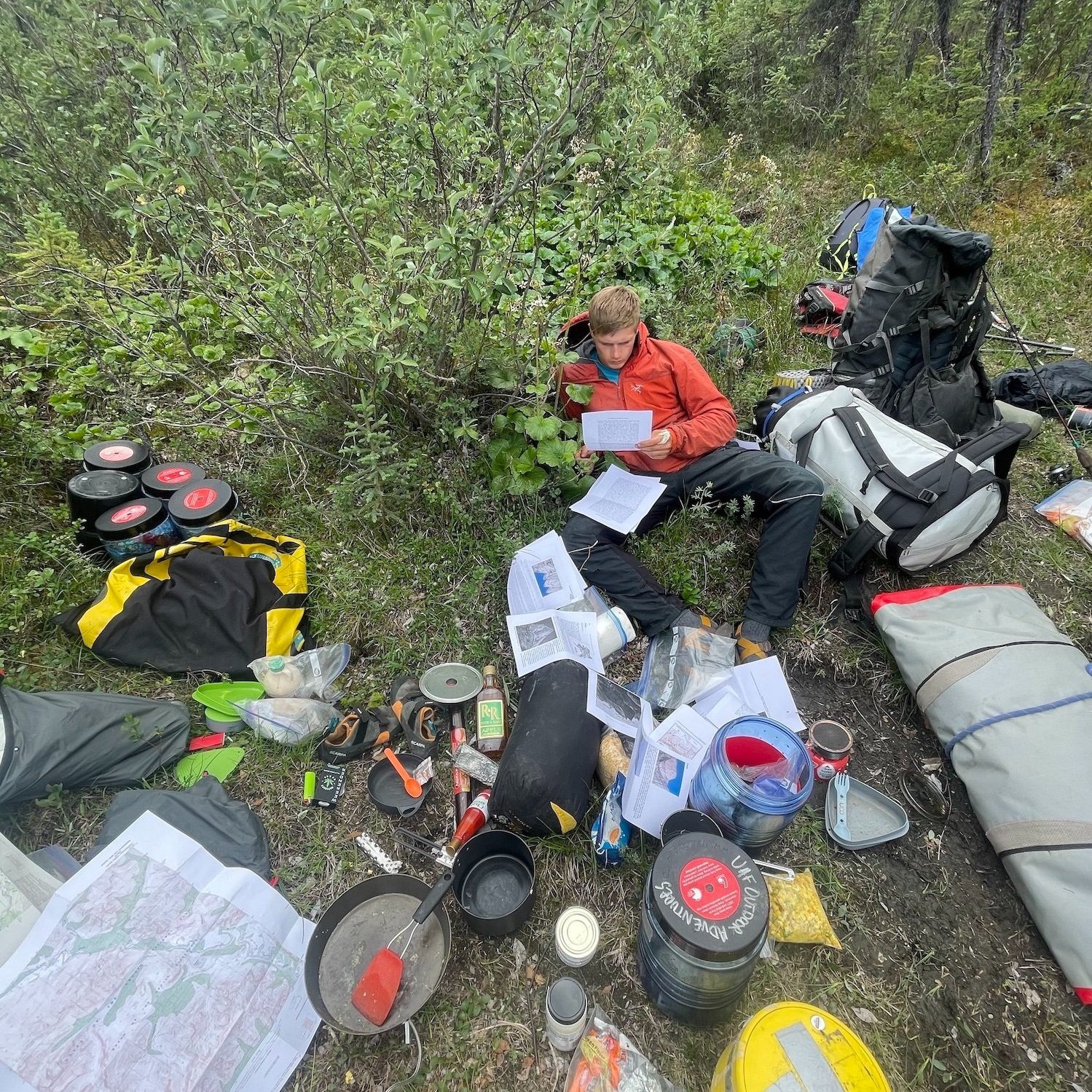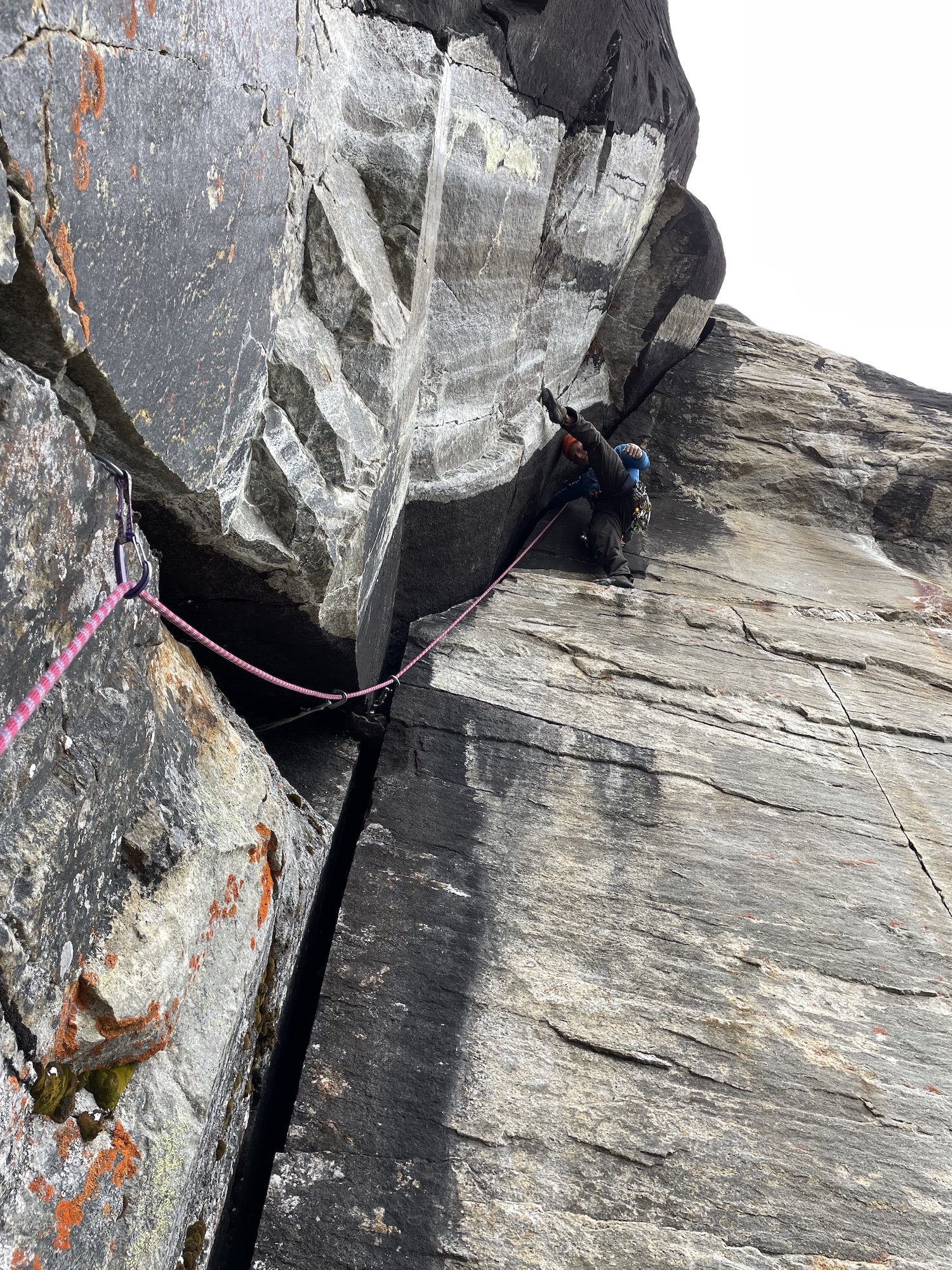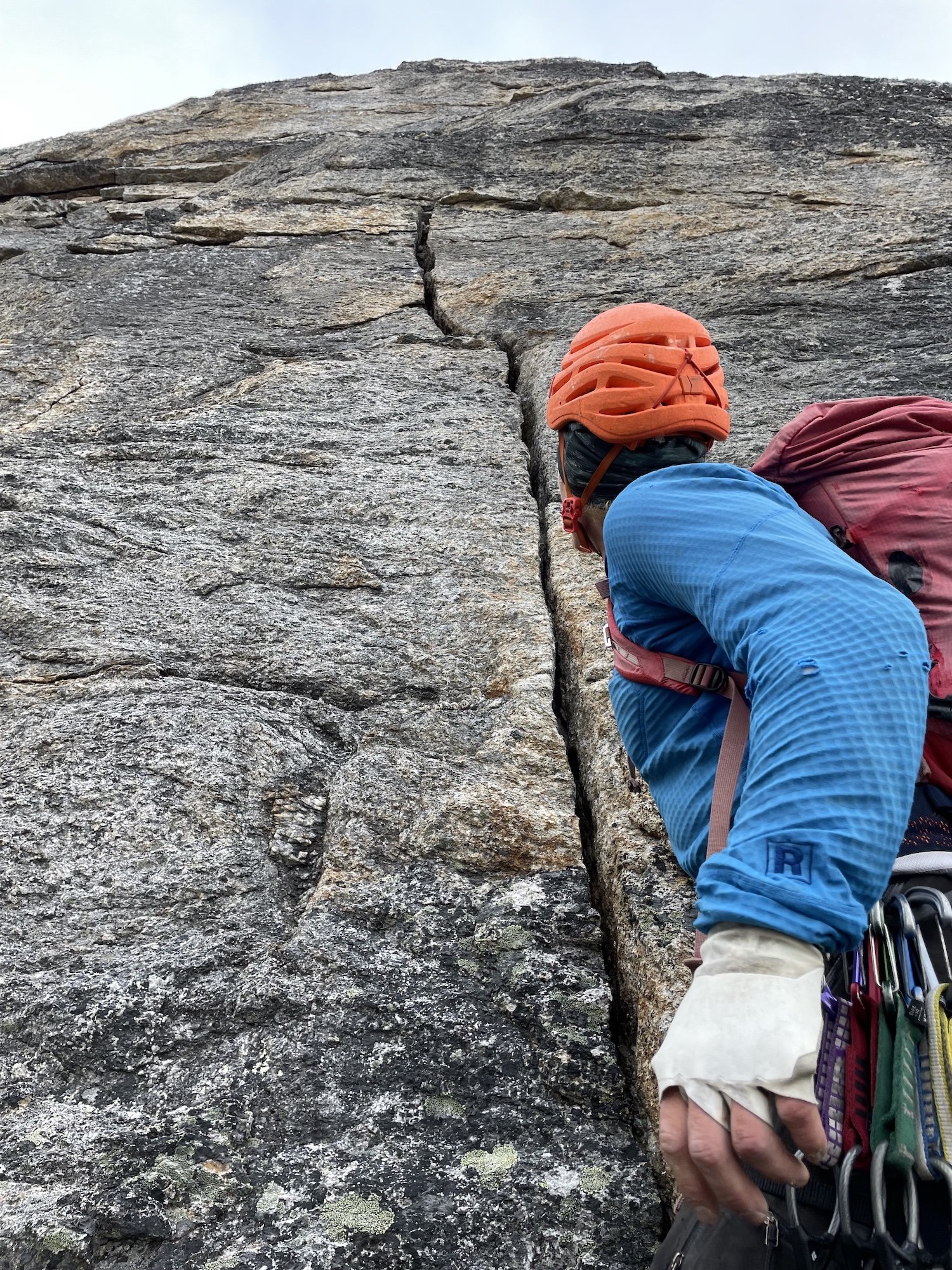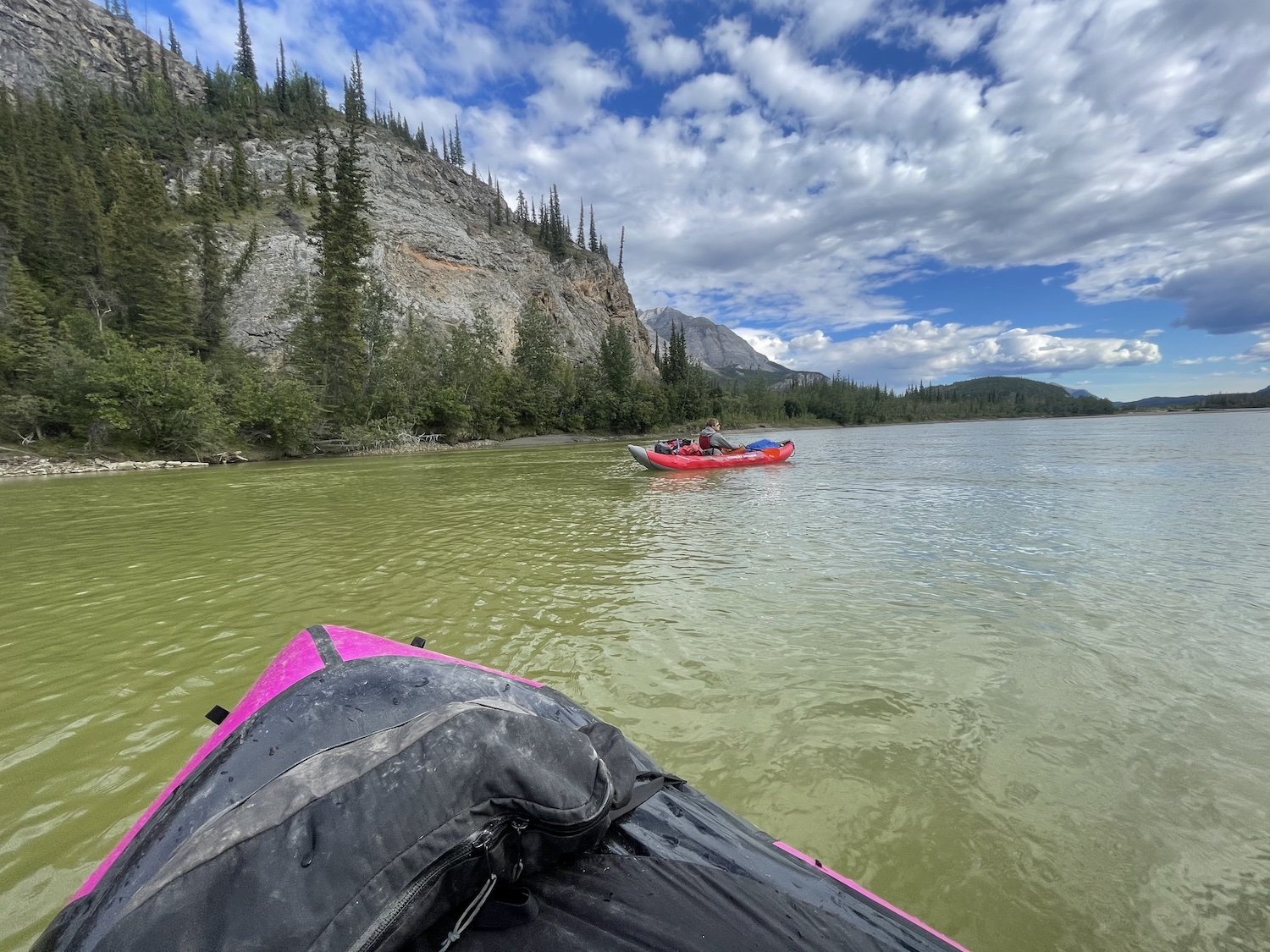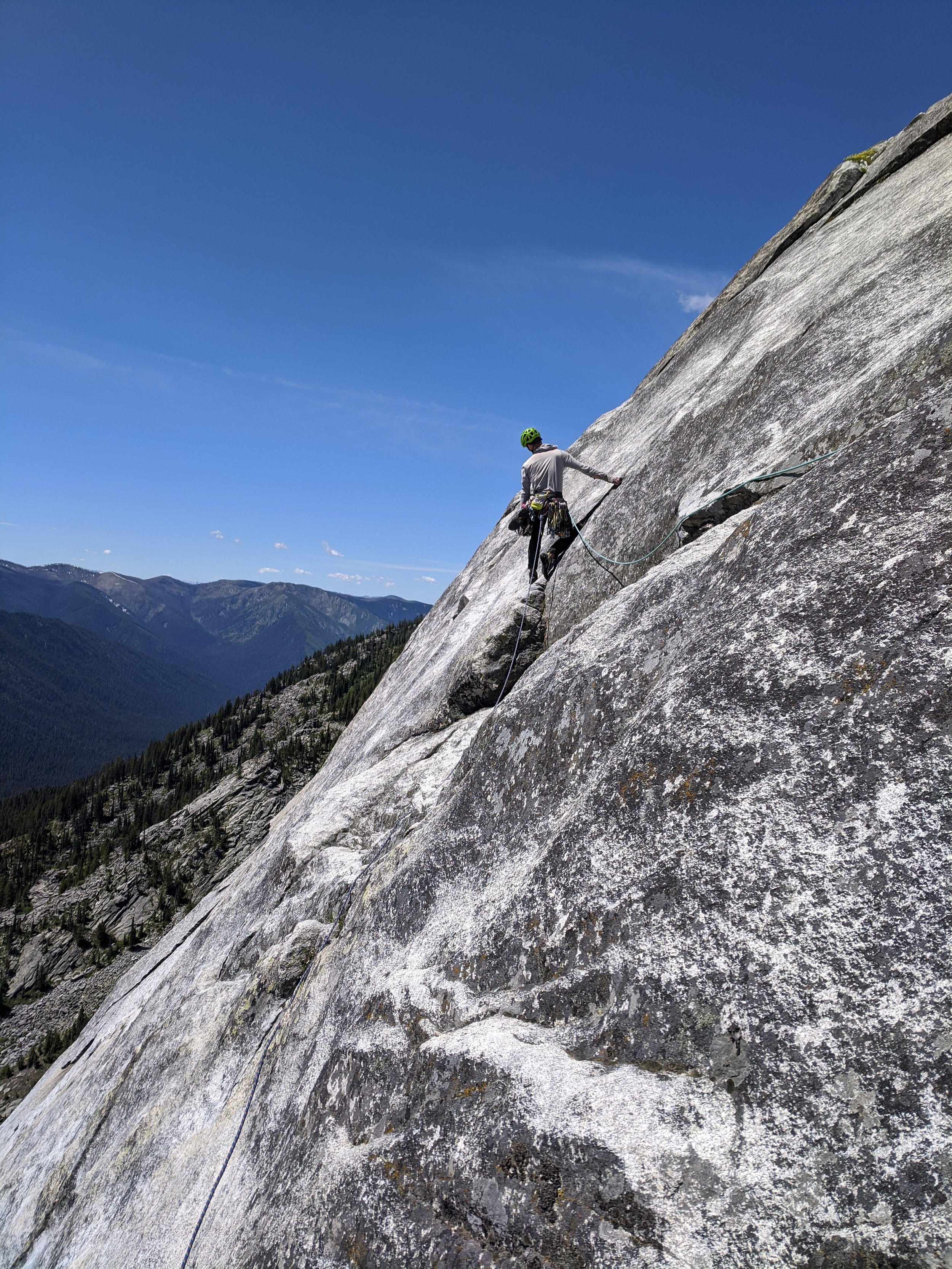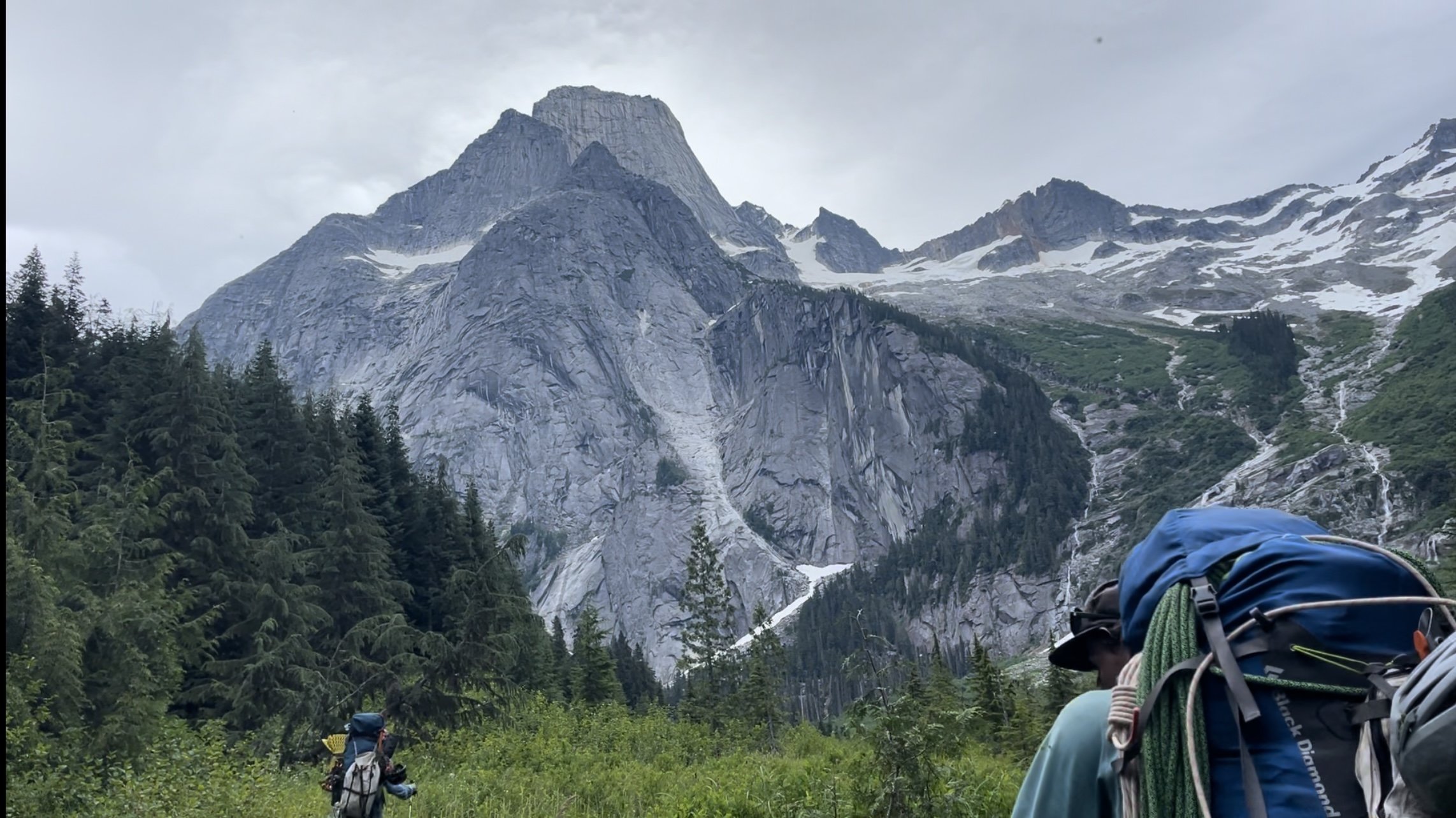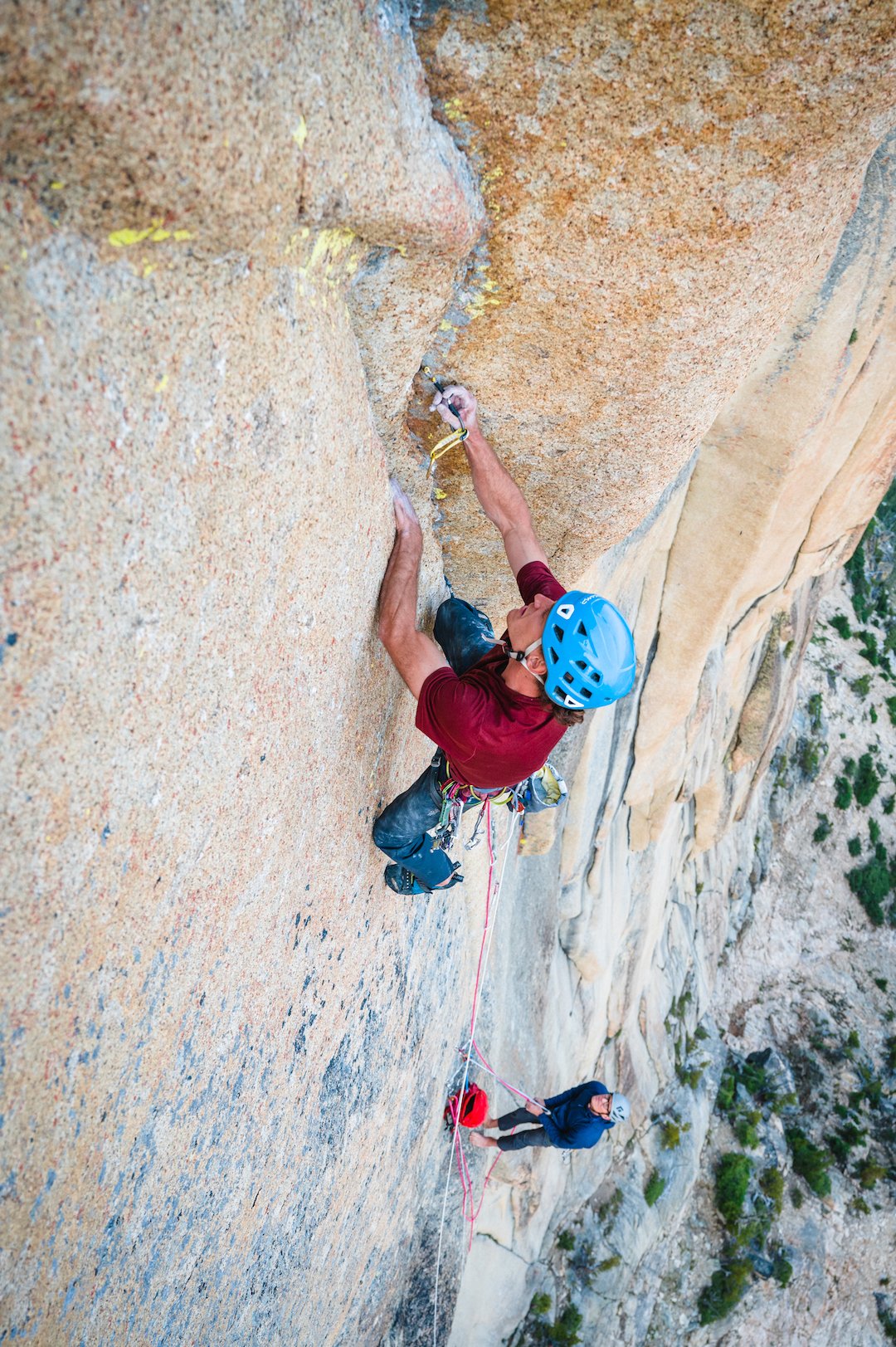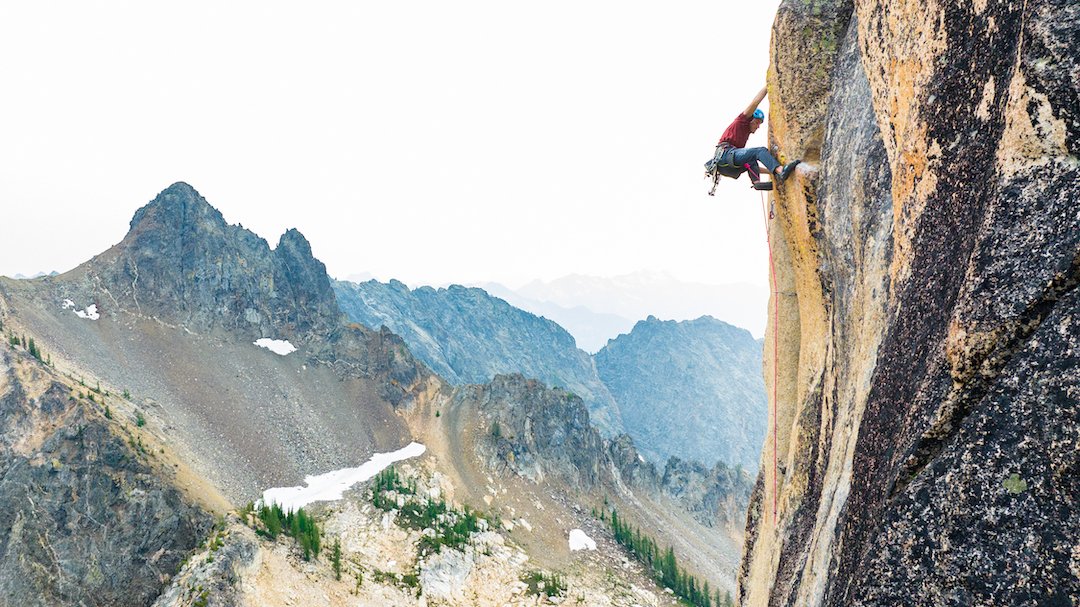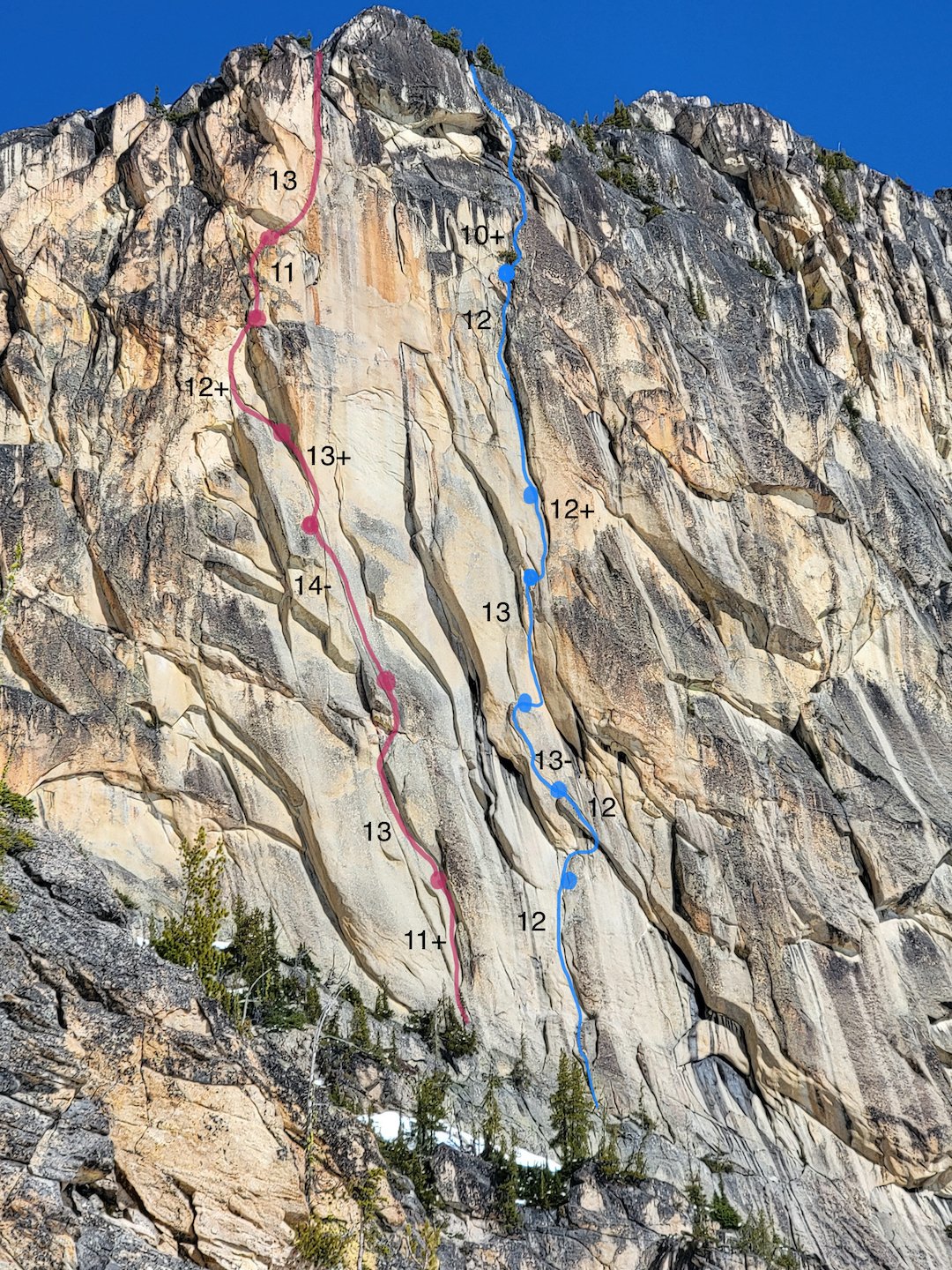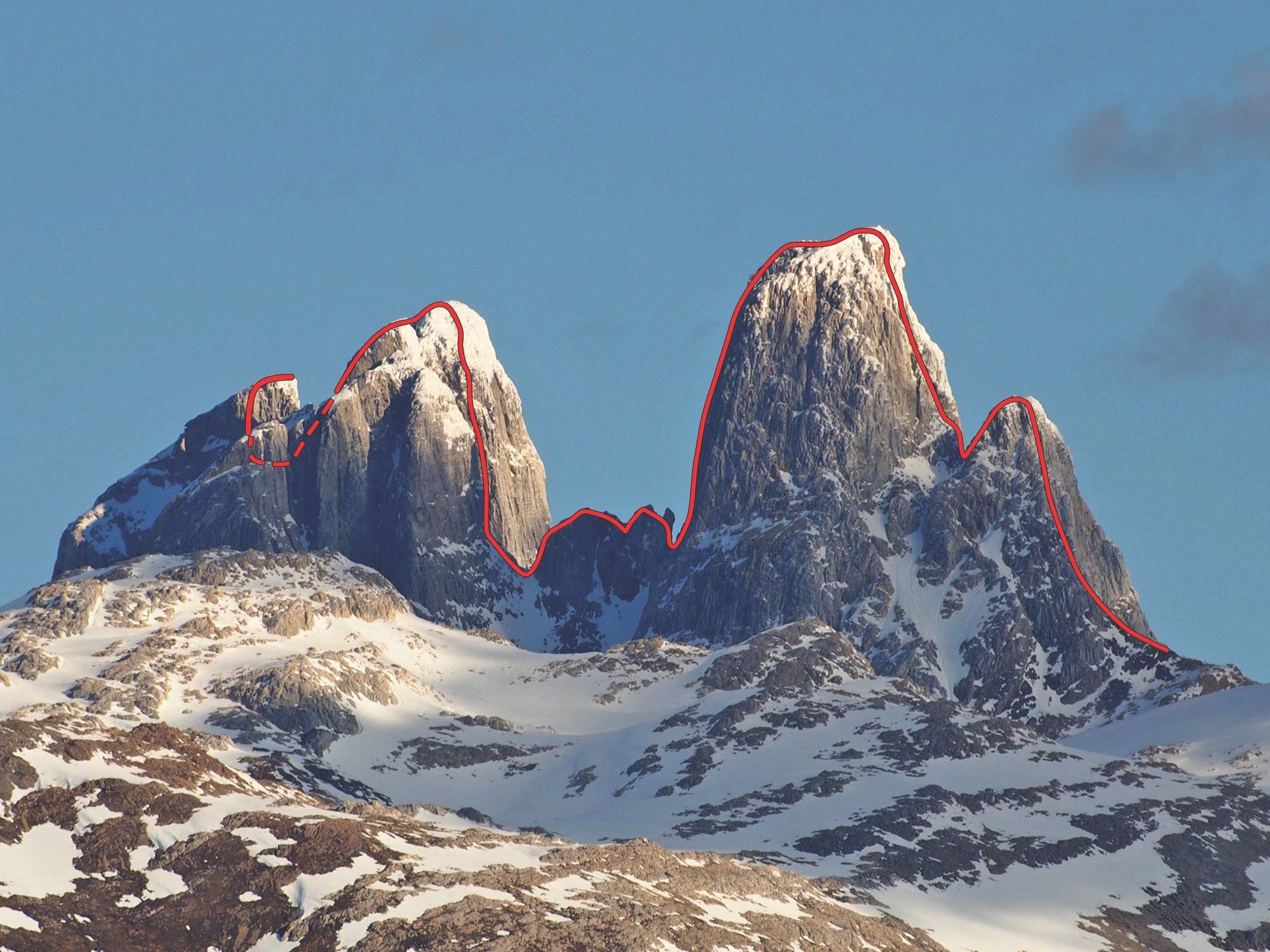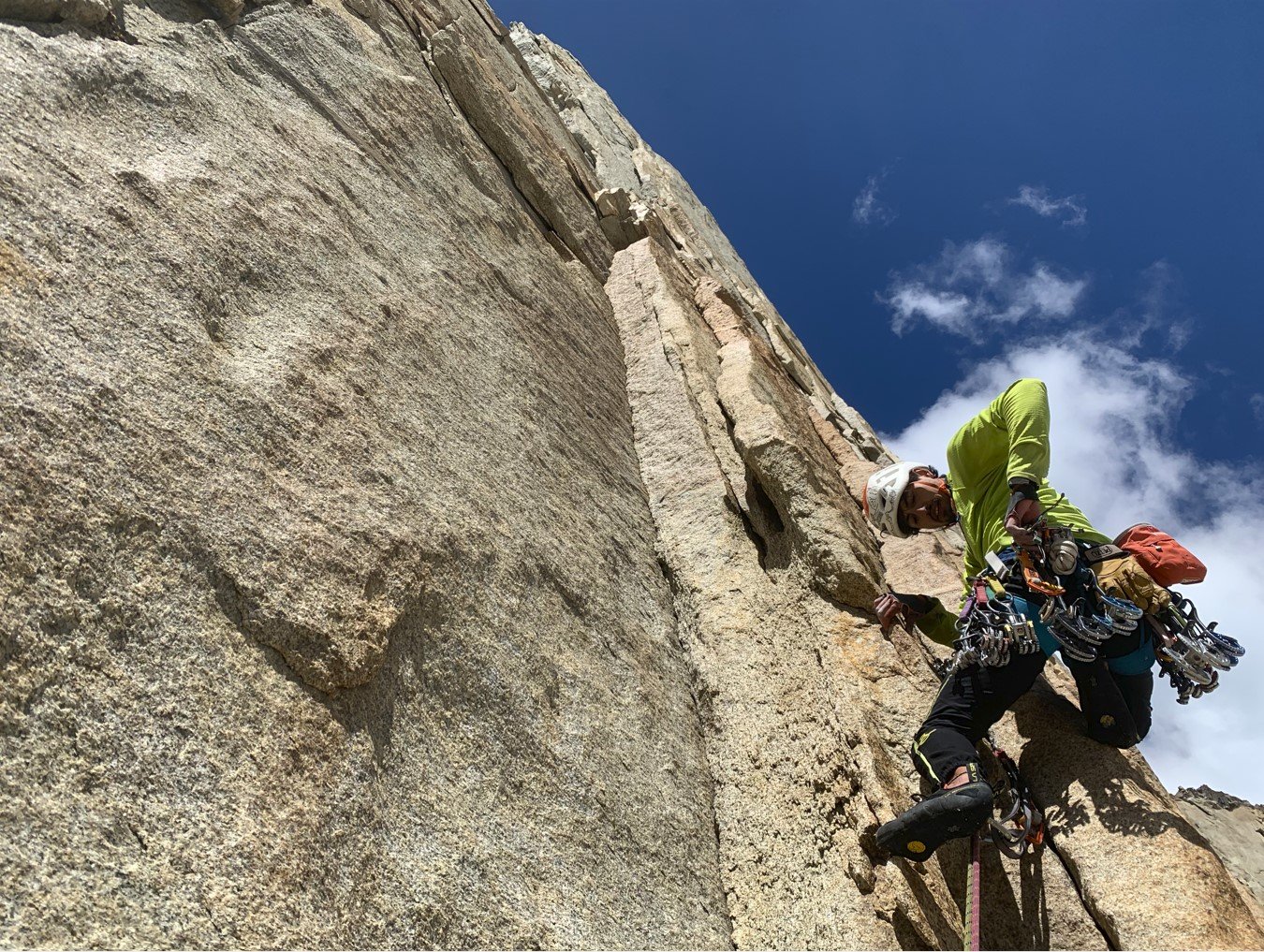The Line is the monthly newsletter of the American Alpine Journal.
O CANADA!
Canada is an enticing destination for U.S. climbers: an international locale that’s easy to reach and to navigate, yet with a wilder feel than many of the crowded crags and peaks back home. With the 2023 AAJ going into the mail next month, here’s a teaser from the upcoming edition: five fresh reports from five Canadian provinces and territories.
Seba Pelletti leading pitch eight of Viaje Boreal (650m, 5.11+) in Canada’s Northwest Terriorties. Photo by Pato Diaz.
Northwest Territories
Seba Pelletti, an Australian who resides in southern Chile, traveled to northern Canada last August with three Chilean friends: Pato Diaz, Michael Pedreros, and Hernan Rodriguez. The prime objective was Mt. Dracula, a hulking summit in the Vampire Peaks, about 20 kilometers to the northwest of the famed Cirque of the Unclimbables. This rainy zone rarely sees visitors, but the 2022 team was lucky, with enough good windows to put up three new routes, including a 650-meter line up a previously unclimbed face on Dracula (see photo above), possibly only the third ascent of this isolated peak. Pelletti described their adventures in his story for AAJ 2023.
Photo by Zach Clanton.
British Columbia
Near Terrace, B.C., is a striking granite pyramid known variously as the Shark’s Fin or the Saddlehorn. This peak had been climbed and even skied, but the beautiful southern prow had no known routes. Zach Clanton, Kris Pucci, and Tim Russell changed that last July, with an 11-pitch line that begs to be climbed. The first ascent went smoothly. As Zach wrote in his AAJ report, “Sometimes, very rarely, even with all of the mysteries intact, things go according to plan…. We had no brushes with death, no dicey bear encounters, and no stories of terrifying choss. And that’s just how we like it.”
Alberta
Sam Wall’s family used to run one of the backcountry lodges at Amethyst Lake in the Tonquin Valley of Jasper National Park, below the incredible quartzite walls of the Ramparts. (Those lodges were closed recently in an effort to protect a small herd of caribou in the valley.) During his years of staring at the walls, Sam picked out a possible new route up the northeast face of Oubliette Mountain. In August, he and Shep Howatt rowed across the lake to access the face and succeeded with a 900-meter new route (5.10-) to the summit. After a bivy on the ridge, they traversed along the Ramparts to climb the north ridge of Bennington Peak, also a first ascent. Read Sam’s report here.
High on the northeast face of Mt. Oubliette during the first ascent, with Amethyst Lake below. Photo by Sam Wall.
Newfoundland
Silas Rossi on Delirium, one of the new routes at the Bear’s Den near Parsons Pond in western Newfoundland. Photo by Ryan Stefiuk.
New Englanders have been making the trek to western Newfoundland for decades to explore the East’s biggest ice climbs. (See Alden Pellett’s Recon story in AAJ 2021 for the climbing history of this area.) In 2022 and 2023, a rotating crew of Northeastern U.S. climbers has focused on Parsons Pond, a remote area accessed by snowmobile. Ryan Stefiuk reveals the goods in AAJ 2023.
Nunavut
From Baffin Island in Nunavut Territory comes our final AAJ teaser: a short video about a new route up the northeast face of Mt. Turnweather by Neil Chelton, Owen Lee, and Maria Parkes. This fun look at expedition life was edited by Chelton, creator of the VDiff instructional website. Rainy Day Dream Away, the 20-pitch route they climbed, takes a direct line to the east ridge of Turnweather, a route first climbed in 1977 by former AAC vice president Clark Gerhardt and Craig McKibben. The full story of last summer’s ascent will appear soon in the 2023 AAJ and at our website.
THE 2023 COVER: A FAMILY AFFAIR
As the AAJ is being prepared for mailing, here’s a preview of the 2023 cover, showing a precarious stance on Shield of Dreams (5.13b), one of several hard new routes climbed last year on Trapezoid Peak in the High Sierra. The climber is Chase Leary, who, as Andy Puhvel writes in his AAJ report, is “a local granite master whose wizardry on the rock has earned him the nickname ‘Swami.’ Chase’s family goes back three generations in the Eastern Sierra, and his father, Kevin Leary, was one of the first climbers to establish the 5.12 grade in Tuolumne and the Eastside.”
Puhvel also has multi-generational family ties to the Sierra: He and Lisa Coleman ran the Yo! Basecamp Rock Climbing Camp in these mountains for more than 20 years, and they still operate the Nor Cal Youth Climbing League, the longest running competition series in North America. And their son, Cashus, shot this year’s spectacular cover photo!
Join the Club—United We Climb.
Get the AAJ Sent to You Annually
Partner-level members receive The American Alpine Journal book every year. Documenting mountain exploration and the year’s most significant ascents through first-person reports and photos, it’s an essential historical record and a feast of inspiration.
Rescue & Medical Expense Coverage
Climbing can be a risky pursuit, but one worth the price of admission. Partner-level members and up receive $7,500 in rescue services and $5,000 in emergency medical expense coverage. Looking for deeper coverage? Sign up for the Leader level and receive $300k in rescue services.
THE HUNTINGTON SPECIAL
The Technicolor Super Dream on Mt. Huntington. Photo by Zac Colbran.
The latest Cutting Edge podcast highlights three young climbers from the U.S. and Canada—Zac Colbran, Dane Steadman, and Grant Stewart—who found a beautiful and challenging new route up the west face of Mt. Huntington, one of North America’s most iconic peaks. Listen here.
Sign Up for AAC Emails
The Line is the newsletter of the American Alpine Journal (AAJ), emailed to more than 80,000 climbers each month. Find the archive of past editions here. Interested in supporting this online publication? Contact Billy Dixon for opportunities. Questions or suggestions? Email us: [email protected].




